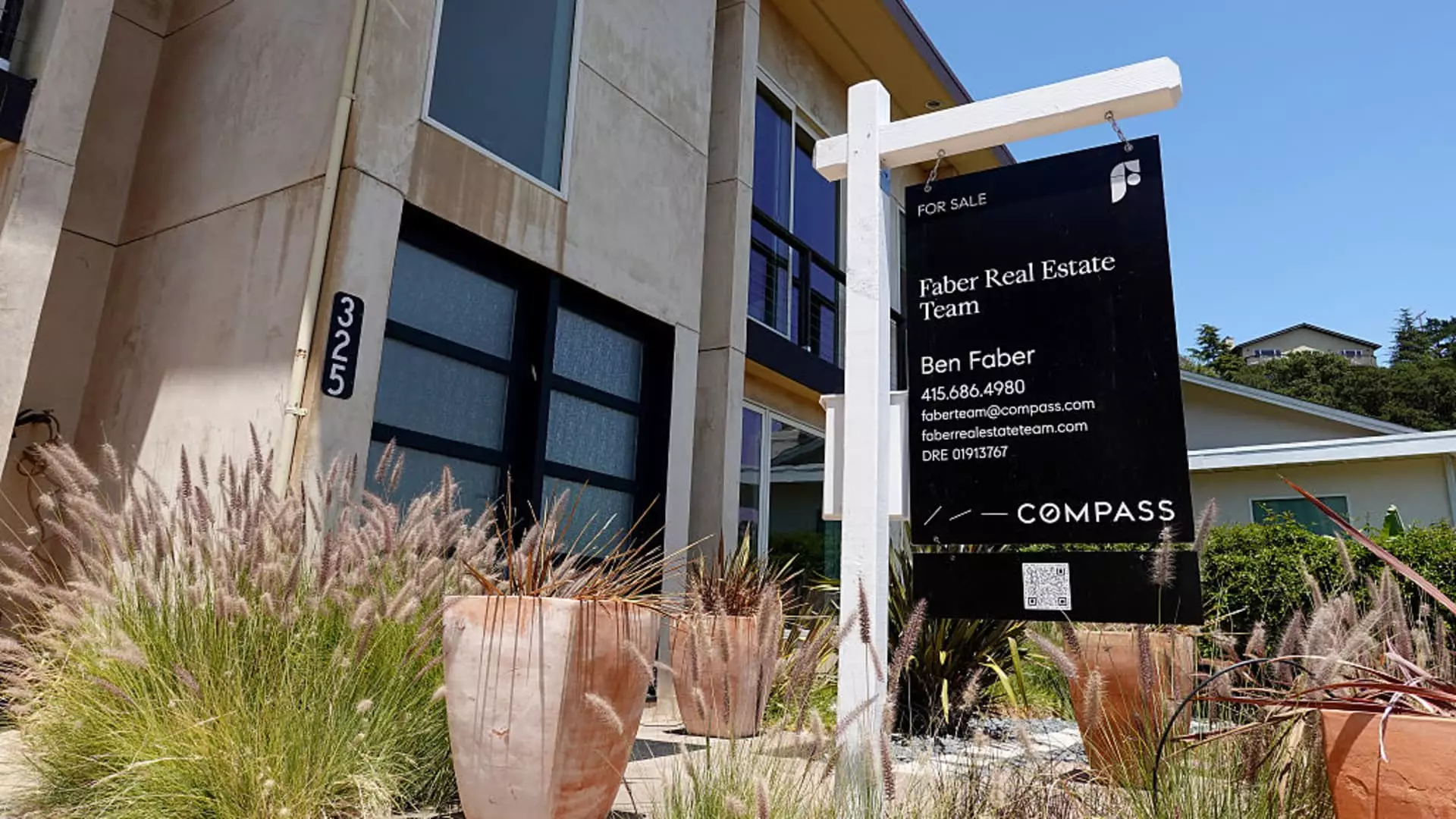In an ironic twist of fate, the housing market—once a bastion of soaring prices and fervent bidding wars—has begun to resemble a slow-moving train wreck, where the rising supply is starkly outpacing the dwindling demand. According to the latest S&P CoreLogic Case-Shiller Index, home prices experienced a meager 2.7% increase in April compared to the previous year, a significant decline from March’s 3.4% rise, marking the lowest growth rate witnessed in almost two years. It’s a grim testament to an unyielding reality where economic fundamentals are increasingly elbowing out speculative investment, shifting the very character of the housing landscape.
This newly unveiled data begs the question: Why have we suddenly shifted gears, and what does this say about the resilience of a market built on quicksand? Recent data from Parcl Labs reinforces this troubling narrative, indicating that national prices are essentially flat compared to last year. The traditional patterns of regional real estate performance are being flipped on their heads, as markets that once basked in their pandemic-era glory are now pulling back. Meanwhile, the more stable, historically steady regions, particularly in areas like the Midwest and Northeast, are beginning to overshadow their flamboyant counterparts down South.
The End of the Pandemic Darlings?
It’s hard not to feel a twinge of schadenfreude as we watch the stars of the pandemic housing boom—cities like Tampa and Phoenix—fall from grace. Tampa and Dallas showed declining prices of 2.2% and 0.2%, respectively. Such once-coveted locales now languish in the shadow of their previous splendor, while longstanding markets like New York, Chicago, and Detroit seem poised for something of a renaissance. What gives? Is it sheer coincidence that we are witnessing this resurgence, or are we finally witnessing a return to equilibrium?
Perhaps this trajectory of decline for the southern hot spots was inevitable, as inflated home values in these regions led to an unsustainable bubble. This new data reinforces the notion that real estate markets are cyclical, driven by fundamental economic principles rather than transient trends. The market is indeed maturing, and as Nicholas Godec of S&P Dow Jones Indices astutely noted, the leadership dynamics are transforming towards a more sustainable and realistic framework.
Mortgage Rates and Buyer Fatigue: The Silent Killers
Adding salt to the wound, the increasing mortgage rates—hovering just above the 7% mark—serve as a formidable barrier for many prospective buyers. Cornered by exorbitant monthly payments, a significant number of potential homeowners, especially first-timers, are effectively sidelined. Data from the National Association of Realtors reveals that first-time buyers accounted for a mere 30% of May sales, a stark contrast to the historical average of 40%. What does this mean for the future of homeownership in America? Simply put, it spells doom for the dream of many aspiring homeowners who are left to watch from the sidelines.
Even as the supply of homes for sale rises, it’s essential to recognize that it remains below pre-pandemic levels. The unfortunate reality is that a mere 6% of sellers currently find themselves at risk of selling their homes at a loss—a figure that, while slightly elevated from last year, still reflects historical stability. The panic and urgency seen a decade ago following the subprime mortgage crisis do not appear to be on the horizon; however, this complacency might be unjustified.
A Rude Awakening or a Long-Awaited Correction?
Ultimately, the keys to maintaining stability rest in the hands of existing homeowners, who are reluctant to relinquish their sub-4% mortgage rates and flood the market with supply. Coupled with new construction failing to adequately meet the demand created by a growing population, the supply-demand imbalance may provide a dampening effect on prices that some theorize could lead to a more significant correction. Yet, that won’t happen without a seismic shift in buyer sentiment and economic conditions.
What the unfolding trends reveal is a bittersweet narrative of a housing market that is both lamenting its past glory and cautiously inching toward a more balanced future. Whether this transition is a sign of a maturing market or the harbinger of deeper economic malaise remains to be seen—but one thing is certain: the housing landscape is changing, and we must brace ourselves for the outcome.


Leave a Reply